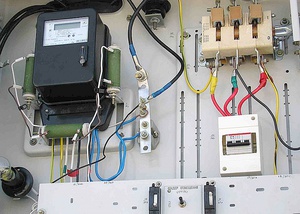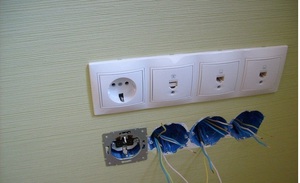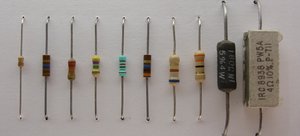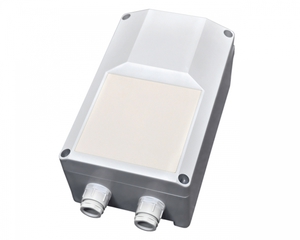
How to find the power of a three-phase network by current and voltage, calculation by formulas
Three-phase and single-phase networks are distributed approximately equally in private and apartment buildings. But it is worth noting, that the industrial network is three-phase by default and in most cases to the street, where private houses are located or a three-phase network is suitable for an apartment building. And then it branches into three single-phase, and lead to the end user of current.

The calculation is not made just like that, and in order to ensure the most efficient transmission of electricity from the power plant to you, and also the purpose of the greatest reduction of losses of the electric power in transport process is pursued, after all, the conductor resists the current, on which the same current flows.
If you are interested, what network you have in your house or apartment, then it is quite easy to determine. If you open the electrical panel and look, how many wires are used for your apartment, then if you see 2 or 3 wires, it is a single-phase network, 1 and 2 wires are phase and zero, 3 wire, if it is present, it is grounding. In the same three-phase network of wires will be or 4, or 5. Three phases A, V, WITH, zero and if present - grounding conductor.
The number of phases on the so-called picketers is also determined, input circuit breaker. For single-phase network stands out 2 or 1 dual cable, and in three-phase will be 1 built cable and single. But do not forget about the tension, with which you need to be very careful.
To make a calculation of current, and voltage calculation to find out the power is easy, usually, large energy consumers need three-phase networks. Using the formula, given in the article, to calculate the power, using the values of current and voltage, you can easily.
Find out the power consumption of electricity
so, let's get to the point, we need to know the power of electricity by current and voltage. First of all you need to know, how much energy you will consume. It's easy to find out, comparing all the energy consumers in your home. Let's choose the most common technique, without which modern man can not do. By the way, find out how much a device consumes, can be in the passport data of your appliance, or on the label, which can be on the case. Let's start with the highest voltage consumption:
Washing machine - 2700 Watt
- Water heater (boiler) — 2000 Watt
- Iron - 1875 Watt
- Coffee maker - 1200 Watt
- Vacuum cleaner - 1000 Watt
- Microwave - 800 Watt
- Computer - 500 Watt
- Lighting - 500 Watt
- Refrigerator - 300 Watt
- TV - 100 Watt
According to the formula, we need to add and divide everything by 1000, to translate from watts to kilowatts.
In total, we succeeded 10975 Watt, translate into kilowatts, divided by 1000.
Together we have consumption 10.9 kw.
For the average person, one phase is enough. Especially if you're not going to include everything at once, what, of course, unlikely.
But keep in mind that current consumption can be much higher, especially if you live in a private house and / or you have a garage, then the consumption of one device may be 4-5 kw. Then you will be better off a three-phase network, as more powerful and allows you to connect much more powerful power consumers.
three-phase network
Let's take a closer look at the three-phase network, as more convenient for us. To begin with, we give a comparative characteristic of a single-phase and three-phase network. Here are some pros and cons.
When a three-phase network is used, it is likely that the load will be distributed unevenly on each phase. If, example, from the first phase an electric boiler and a powerful heater will be requested, and from the second - TV and refrigerator, then such a phenomenon will take place, as "phase skew" - asymmetry of voltages and currents, which may be the result of the failure of some power consumers. To avoid this situation, you should carefully plan the load distribution at the initial stage of network design.
Also, a three-phase network requires more wires, cables and circuit breakers, pass current, as the power will be much higher, accordingly, the installation of such a network will be more expensive.
Single-phase network as possible ??potential power is inferior to three-phase. So if you plan to use a lot of powerful power consumers, then the second option will be correspondingly better. For example, if a two-core enters the house (three-core if it is grounded), from the power line, cable cross section 16 mm 2, then the total power of all electricity consumers in the house should not exceed 14 kW, as in the example, above.
But if you use the same wire cross section for a three-phase network, but accordingly the cable will be 4-5 vein, then the maximum total power will be equal to already 42 kw.
Calculate the capacity of a three-phase network
For calculation we will accept any production shop, in which thirty electric motors are installed. A four-wire line enters the shop, remember what it is 3 phases: A, B, C, and neutral (zero). Rated voltage 380/220 volt. The total power of all engines is Ru1 - 48 kW, we still have light bulbs in the workshop, the total power of which is Ru2- 2kw.
- Ru - installed ??total capacity of the consumer group, in magnitude equal to the sum of their declared capacities, measured in kW.
- Ks - demand factor at the highest load. The demand factor takes into account the largest possible number of inclusions of group receivers. For electric motors, the demand factor must take into account the magnitude of their load.
Demand ratio for lighting (lighting) load, ie lighting, Ks2-0.9, and for power load, that is, electric motors Ks1 = 0,35. Average power factor for all cos consumers (?) = 0,75. It is necessary to find the calculated current of the line.
calculation
Calculate the estimated force load P1 = 0,35 * 48 = 16,8 kw
and the estimated lighting load P2 = 0,9 * 2 = 1.8 kw.
Full design load P = 16,8 + 1,8 = 18,6 kw;
The calculated current is calculated using the formula:
where
P - estimated power of the consumer (electric motors and lighting), kw;
Un - rated voltage at the terminals of the receiver, which is equal to the interphase- (linear, when phase and phase are connected, that is 380 V) ie mains voltage, from which it feeds, V;
cos (?) - receiver power factor.
So, we calculated the current capacity, which will allow you to deal with three-phase networks. But go directly to the installation of the system, do not forget about safety, after all, current and voltage is a dangerous phenomenon for your life.



